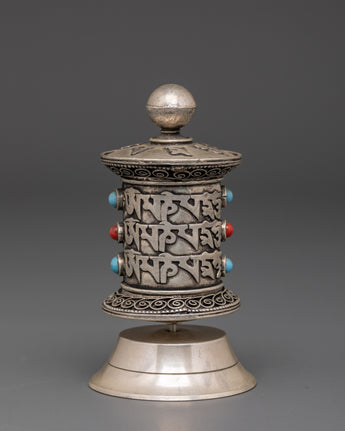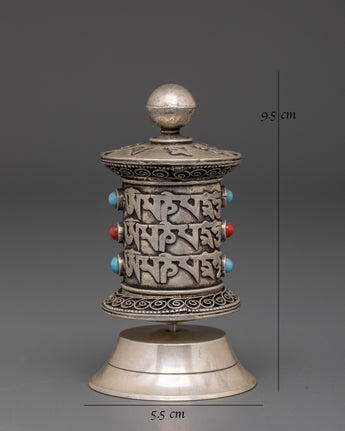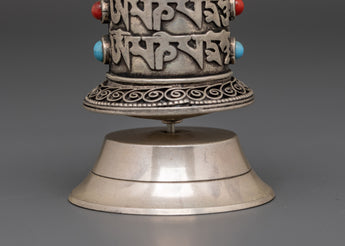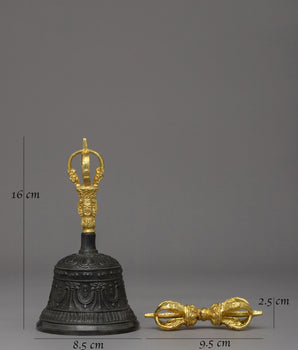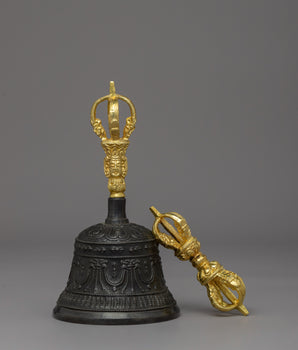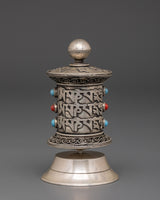
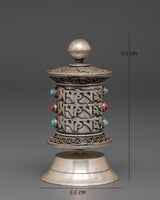
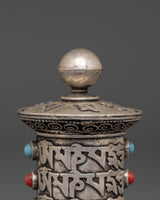
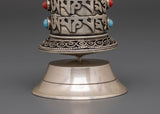
Ritual Prayer Wheel | Spinning wheel

100% AUTHENTIC

HANDMADE

FREE SHIPPING
Tibetan Ritual Prayer Wheel | Spiritual Artifact for Meditation
--------------------------------------------------------
Size: 9.5cm (Height) x 5.5cm (Width)
Weight: 0.92kg
Materials: Brass, Artificial Stones: Turquoise, Coral
--------------------------------------------------------
About our Prayer Wheel
This Ritual Prayer Wheel is a beautifully handcrafted spiritual artifact designed to enhance your meditation and rituals. Standing at 9.5cm tall and weighing 0.92kg, this prayer wheel is made from brass and adorned with vibrant turquoise and coral stones, adding an extra layer of symbolic meaning. Prayer wheels are believed to amplify prayers and mantras, bringing spiritual benefits and blessings with every turn. Whether used in a meditation practice or displayed on your altar, this wheel acts as a powerful tool for deepening your connection to spiritual traditions.
The combination of brass, turquoise, and coral adds both beauty and significance to this ritual object. The turquoise is often associated with healing and protection, while the coral symbolizes vitality and life energy. When incorporated into your spiritual practices, this prayer wheel helps to invite peace, prosperity, and protection, making it an essential addition to your Buddhist ritual tools.
Introduction to Prayer Wheel
A prayer wheel is cylindrical on a spindle and is used in Tibetan Buddhism. It is typically inscribed with the mantra "Om Mani Padme Hum" and rotated by hand as a form of spiritual practice and to accumulate merit. Spinning the wheel is believed to have the same spiritual benefits as verbally reciting the mantra. The use of prayer wheels is widespread in Tibetan Buddhism and has spread to other cultures.
How does the Buddhist Prayer Wheel benefit us?
The benefits associated with rotating the wheel are numerous. It promotes knowledge, compassion, and bodhicitta in the practitioner and improves siddhis (spiritual powers such as clairvoyance, precognition, etc.). The practitioner can repeat the mantra as often as possible while the wheel is rolling, maintaining a calm, meditative attitude. A Tibetan Buddhist tradition holds that after a practice session, one should dedicate any acquired merits to the benefit of all sentient beings. Then three times Om Ah Hum. This is usually among Tibetans after finishing any Buddhist practice, including the prayer wheel exercise.
How do you set up your own Buddhist Shrine?
• Find a clean, quiet, and uncluttered spot
• Set up an altar table and cover it with an altar cloth that calls to you
• Place your sacred item at the center


